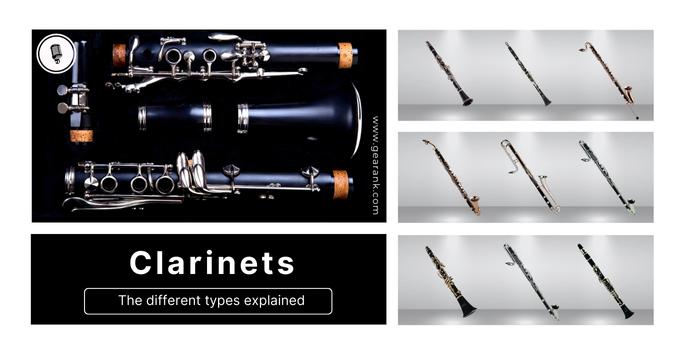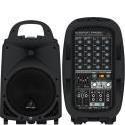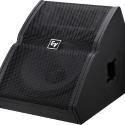
The use of clarinet isn’t just known in the classical repertoire and big band jazz. Some of the most recognizable songs like “When I’m Sixty-Four” by The Beatles and “Life in a Glass House” by Radiohead. Artists use this instrument to produce a distinct sound with a different timbre compared to others.
So you might be reading this and wondering, what should I get of the many types of clarinets?
If you are a beginner looking for the best option or a person seeking to explore the depths of its tonal range, there are types of clarinets that will suit you.
Let’s take a closer look at some of the different types of clarinets. Read on to learn how to distinguish regular clarinet from bass clarinet and contra-alto. More importantly, this will help you choose the best instrument for your needs.
What Is A Clarinet?
The clarinet is a part of the woodwind family. It is a single-reed woodwind instrument that produces a tone by forcing air through its reed and into the tube. The cylindrical bores determine what notes are played, ranging from an octave below middle C to three octaves above.
What Is A Transposing Instrument?
Before going into the different types of clarinets, it is useful to have an understanding of transposing instruments.
A transposing instrument plays music written in one key but sounds in another. This means that the notes produced by a transposing instrument will sound higher or lower than what was written on the sheet music.
To make it convenient for clarinetists, ledger lines are avoided by transposing the piece too closely to the bar lines of sheet music.
All modern clarinets except for the C clarinet are transposing instruments and they are written a step lower than they sound. The C clarinet plays in the same key as it is written.
Types of Clarinets
Clarinets have a limited range due to how woodwind instruments are constructed. Classifying woodwinds are divided as follows: soprano, alto, and bass.
Like other instruments the design of the clarinet evolved, and are now usually made of three materials: wood, metal, and plastic. The material will influence how your clarinet will sound aside from the inherent timbre you get from the size and shape of different clarinets.
Let’s take a look at some of the most popular instruments in the clarinet family:
Bb Clarinet
-
Range: D3 – Bb6
-
Timbre is warm and full.
-
Found Mainly in orchestra and band music. Can be seen in other genres too
When people think of a clarinet, the B flat clarinet is what they’re probably referring to. This is typically the first clarinet beginners are taught to learn. It is called a “B flat clarinet” because when this transposing instrument plays a C in a music sheet, it sounds like a B flat. This types is also called Bb Soprano Clarinet, and an ensemble of Bb clarinets are sometimes called harmony clarinets.
A Clarinet (Soprano Clarinet)
-
Range: C#3 – A6
-
Timbre is mellow and warm
-
Found in Orchestra and band music.
Clarinet in A, also known as the soprano clarinet. It is a slightly larger and pitched-down version of the Bb clarinet. The soprano clarinet is a transposed instrument that’s also dubbed as having a mellow and relaxed tone compared to the Bb clarinet.
Eb Alto Clarinet
-
Range: E3 – C6
-
Timbre is bright and lustrous
-
Found in Orchestra and band music.
Another popular type of clarinet, the e flat or alto clarinet, has a range of two octaves and is usually made from wood or plastic. This eb transposing instrument has the highest pitch compared to other clarinets and is used in both orchestras and bands to add a higher range of tones.
Bb Bass Clarinet
-
Range: Bb1 – B5
-
Timbre is round and dark
-
Found in Ensembles, bands, and orchestral music.
The bass clarinet is one of the most popular of all types of clarinets. The modern bass clarinet is tuned to Bb and has a range of 4 octaves Bb1 – B5. The upper range of this instrument is used in rare cases, depending on the person’s skill level.
Contrabass Clarinet
-
Range: Roughly around Bb0 – B4
-
Timbre is deep and full-sounding
-
Found in Orchestra and band music.
The largest and lowest-pitched clarinet of the family, the contrabass clarinet, is pitched in Bb, an octave below the bass clarinet. It takes a degree of skill to play properly due to its sheer size. The notes can go extremely low, and the individual oscillations of the sound waves of this instrument can be heard.
Contra Alto Clarinet
-
Range: Roughly around Eb0 – G4
-
Timbre is described as round, dark
-
Found in jazz music, orchestra, and band music.
Also known as the C clarinet, the contra-alto clarinet is another common member of the clarinet family, often seen in clarinet choirs. It has a range tuned to E-flat and is usually made from wood or plastic. It is used in classical music, jazz combos, and occasionally in large concert bands.
Lesser-known clarinets
The decline in popularity of these clarinets below was due to practical reasons in tuning and overall performance; they got phased out by better designs from other clarinets.
Piccolo Clarinet
Often tuned at the key of Ab, the piccolo clarinet is a small, high-pitched member of the clarinet family with a one-octave range. This clarinet is seen in orchestras and bands but is very rare nowadays.
Basset Horn
The Basset Horn is a hybrid between the alto clarinet and the basset clarinet and is usually pitched in the key of F. It has a shape and key system similar to that of an alto clarinet but with an extended range like that of the basset clarinet.
Basset Clarinet
Another type of clarinet in the clarinet family is the basset clarinet. There is often some confusion between a bass clarinet and a basset clarinet. The range of the basset clarinet differs compared to the a bass clarinet.
This type of instrument has a longer body than standard clarinets, with an additional key extended range and a mellower sound. Music experts unanimously agreed that it was used in the Mozart Concerto K622, Quintet K581.
C Clarinet
The C clarinet is very similar to the Bb clarinet but is played a step higher, often used to add additional brightness and clarity to the sound. Just like the Bb clarinet, it’s used in orchestras and bands for solos.
The C clarinet is a good option for those looking for an instrument that can produce a bright and clear sound. However, this type is now rarely used.
The D clarinet is similar, and share the same fate as the older types which have fallen out of popularity.
What Type of Clarinet Is Right for Me?
There are a combination of factors to keep in mind if you’re choosing a clarinet. Here is some list of questions that might help you narrow it down:
1. The Type of Music You Will Be Playing
The type of clarinet you’re going to use will depend on the style of music you’re aiming to play. For instance, a jazz ensemble may call for an A or Bb clarinet, while a classical orchestra may require an Eb or contra-bass clarinet.
2. Your Skill Level
For beginners, clarinet teachers would most likely encourage you to start with a common Bb clarinet because it’s the most used and is generally easier to play than other types. Upon gaining experience over time, you can expand to other clarinets like the sopranino clarinet, or e-flat clarinet to broaden your skills. A bass clarinet, for the most part, is for intermediate to advanced-level players.
3. Your Budget
As with most instruments, you get what you pay for. A better-sounding clarinet requires serious investment. Clarinets can range from basic models made out of plastic to professional-grade wood instruments – you should be clear on how much you’re willing to spend before making your purchase.
4. The Sound You’re Looking For
For beginners, this shouldn’t be a big concern because the skill is what needs to be developed first. Intermediate to advanced players are the ones who will be opting for a better tone. Different clarinets have their own signature voice. Generally, an e-flat clarinet is used for a brighter, crisp tone. On the other hand, A and Bb clarinets produce a mellow, warm sound.
As I mentioned, the sound quality will depend on whether you’re going to buy a plastic or a wooden clarinet. Wooden clarinets have a warmer tone, while plastic clarinets are shriller and a bit artificial-sounding.
If you’re looking for quality tone, then you’ll want to look for rare clarinets like the Clarinet d’Amour with its mellow and romantic voicing.
4. Size and Weight
When choosing the right type of clarinet for your needs, size, and weight are also important factors to consider. Bb, A, and Eb Clarinets are lighter and smaller in size.
On the other hand, bass and contrabass clarinets are on the heavy side. The bass clarinet is about 40 inches tall, while the contrabass is approximately 8 feet long.
So yes, size and weight do matter in this case. You don’t want to accidentally buy a clarinet that’s too big for you!
5. Playability
When buying a clarinet, look for one that has good playability. This will depend on the brand and what type of clarinet you’re planning to purchase. The instrument should be relatively easy to hold as well as have a good response when you press the tone holes or bridge key.
Starters should start the clarinet with a basic model, such as a Bb clarinet. As your breath support and finger agility improve, you can then move up to more advanced types, such as the bass, A, or Eb clarinet.
Which Is The Best Material For Me?
The material of the clarinet will also play a key role in the sound and experience of your clarinet, and the best option will ultimately depend on your lifestyle, budget, and playing preferences.
For starters, plastic clarinets are the most affordable option. Sound-wise, it may not be the most ideal and tends to produce a cheaper-sounding, shriller timbre than metal or wood models. They are best used in beginner classes and marching bands because they don’t get damaged so easily.
If sound quality is a concern, for a warmer, more mellow tone, wooden clarinets are a great option. Wooden clarinets require regular care and maintenance to preserve their tone and material quality. It’s ideal for orchestras but not ideal for marching bands because they can be delicate at some point.
Metal clarinets were the choice of professional players and marching bands due to their solid material and their bright and powerful sound. They don’t need constant maintenance compared to wooden clarinets and tend to be more on the expensive side. However, they’ve fallen out of fashion lately as a material for higher-sounding clarinets. On bass and contrabass, however, most of them are still made out of metal.
Final Thoughts
Clarinets are one of those instruments that come with a range of types, sizes, materials, and sounds. The Bb clarinet is best for starters. for intermediate to advanced players, Eb soprano clarinet, A clarinet, and the bass clarinet are good options to expand one’s repertoire and skill. From bass clarinets to soprano clarinets, contra-alto clarinets to basset clarinets, this is a versatile instrument with plenty of potential.
Whether you are playing in a clarinet choir, paying homage to the finest jazz musicians, or simply picking up a new skill to play in concert bands, there is sure to be a perfect clarinet for you – don’t be afraid to experiment with the different types of clarinets until you find your perfect match.
Contributors:
- Allen Articulo – Co-writer
- Jerry Borillo – Illustrator






